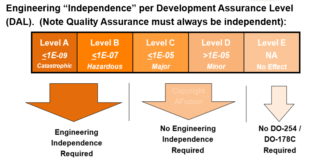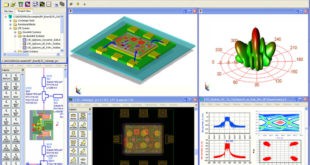Military systems are increasingly using software to support functionality, new capabilities, and beyond. Before a new piece of software can be deployed within a system however, its functional safety and compliance with certain standards must be verified and ultimately receive certification. As the rapid rate of software usage continues to …
Read More »DARPA JAWS developing all-domain battlespace awareness and battle management planning software.
The future operating environment articulated by the NDS, the NDS Commission, and other sources describe how potential adversaries have developed sophisticated anti-access/area denial (A2/AD) capabilities. These capabilities include electronic warfare, cyber weapons, long-range missiles, and advanced air defenses. U.S. competitors have pursued A2/AD capabilities as a means of countering traditional …
Read More »Industrial IIOT
The industrial internet of things (IIoT) refers to the extension and use of the internet of things (IoT) in industrial sectors and applications. Industrial IoT, or the Industrial Internet of Things (IIoT), is a vital element of Industry 4.0. IIoT harnesses the power of smart machines and real-time analysis to …
Read More »DO-178B/C Airborne Software certification standard for safety critical software make flying safer
The growing demand for high-efficiency fighter aircraft, commercial airbuses and the ever-evolving Aerospace and Defense requirements are driving the demand for next-gen airborne electronics systems. Air transportation agencies and aviation OEMs across the globe have been striving to build next-generation Airborne electronics systems to make flying more reliable, predictable, and …
Read More »Digital Signal Processing (DSP) for wireless communications
The first-generation (1G) cellular wireless mobile system were analog and were based on frequency-division-multiple access (FDMA) technology. The second boost for the cellular industry came from the introduction of the second-generation (2G) digital technology standards, including Global System for Mobile (GSM), IS-136 (Time Division Multiple Access, TDMA), and Personal Digital …
Read More »Microwave and mmWave Engineering design and analysis (EDA) tools for aerospace/defense communications, and automotive applications
Millimeter waves are electromagnetic signals with frequencies ranging from 30 to 300 GHz that correspond to wavelengths of 10 to 1 mm in free space. Electromagnetic waves in the millimeter-wave band have attractive characteristics. One of their features is the wider usable frequency band compared with waves in the microwave …
Read More »Artificial Intelligence (AI) for Additive Manufacturing (AM)
Artificial intelligence (AI) and additive manufacturing (AM) are both disruptive new technologies. AI has entered many aspects of our lives, but has not been fully realized in the world of AM. Because of the vast amount of data and the digital nature of the technology, AM offers tremendous opportunities in …
Read More »DARPA SCEPTER
Militaries are facing complex operational and tactical environments such as the increasing challenge of non-state/lone actors; persistent rapid technological development along with its broad availability via the internet; and the advent and expansion of new domains of possible threat such as information systems, space, cyberspace, electronic warfare, and autonomous weapons. …
Read More »DARPA RTRA developing array processors reconfigurable with missions
All modern personal computers including desktops, notebooks, smartphones, and tablets, are examples of general-purpose computers. General-purpose computing incorporates ‘Von Neumann’ approach, which states that an instruction fetch and a data operation cannot occur simultaneously. Therefore, being sequential machines, their performance is also limited. On the other hand, we have …
Read More »Emerging Quantum data centers
Quantum computing has the potential to create new machines that can vastly exceed the capabilities of today’s most powerful supercomputers. A quantum computer harnesses quantum mechanics to deliver huge leaps forward in processing power. Instead of the binary bits used by digital computers, quantum computers use qubits – subatomic particles …
Read More » International Defense Security & Technology Your trusted Source for News, Research and Analysis
International Defense Security & Technology Your trusted Source for News, Research and Analysis




